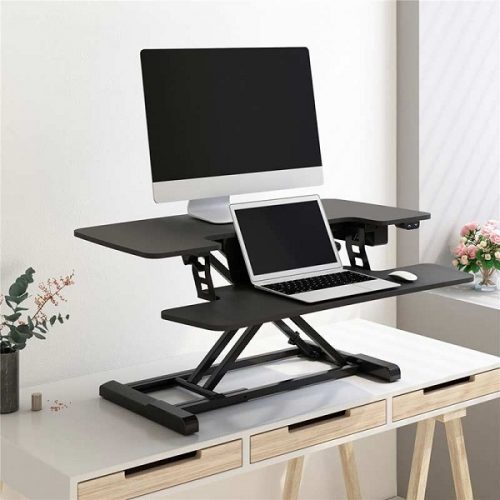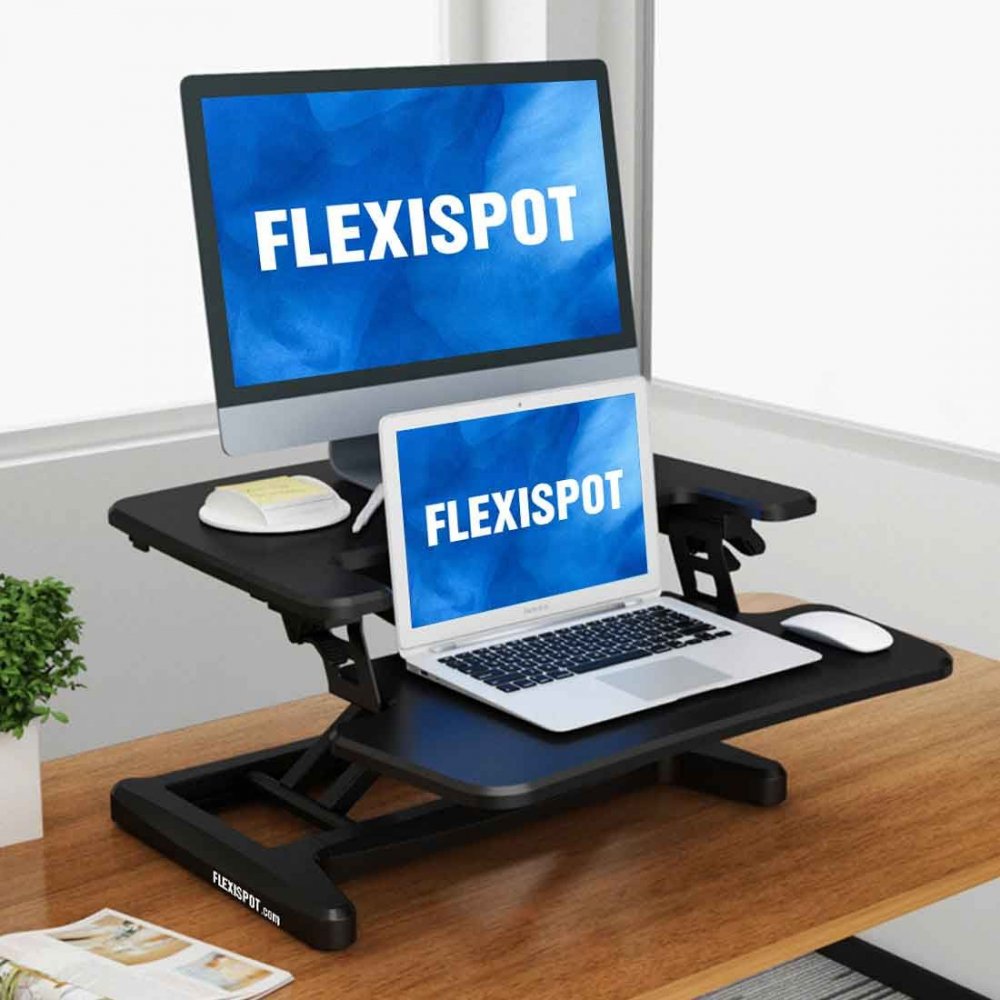

The laptop's webcam can remain at eye level while you're sitting or standing and can even be adjusted mid-meeting. Pros: They're relatively inexpensive, and work well for someone who's doing a lot of teleconferencing. Who it's for: A laptop user who does lots of teleconferencing, and wants to make maximum use of every square inch of space. The swing arm can be lowered (if you're using a monitor) to a seated position or the shelf can be moved out of the way if you want to place your laptop on your desk or spread out your paperwork. Here are the details on the three standing desk styles to help you choose the right model for your needs.Ī swing arm adaptor clamps to the back of an existing desk or table with either a shelf for a laptop or a mount for a monitor. For instance, you may need to invest in longer cords, or decide to get a wireless, rather than wired, keyboard. Plan to stand on a mat in supportive shoes to protect your joints, especially if you'll be standing on a concrete or tile floor. Finally, if you have lots of equipment with power cords, Ethernet cables, and other wires, think about how you'll hook those up as you're shopping. In general, a wider the range of adjustment is almost always better the devices tend to be most stable when they're not at their max height.Ī few quick tips: If you're not ready to commit to a standing desk, or the model you want is back-ordered right now, an ironing board makes a surprisingly good substitute, according to University of Cincinnati public health sciences professor Kermit Davis.

Also measure your seated and standing eye level, which is where your monitor should be placed, so you can look forward at your screen, not up or down. That's how high above the floor the keyboard should be, in both its raised and lowered positions.

So grab a tape measure and a friend to measure from the floor to the bottom of your bent elbow while standing and sitting. When you're sitting, your hips and knees should also be at an optimum 90-degree angle.Įxperts stress that if you're even a little taller or shorter than average, you shouldn't assume that all standing desks will accommodate you. To choose the best desk for your needs, there are a couple of things to consider, starting with ergonomics.įirst step in picking a desk: Make sure it's the right height, says Carolyn Sommerich, an associate professor of systems engineering at Ohio State University. Whether you're sitting or standing, when you're typing your forearms should be parallel to the ground, your elbows at around a 90-degree angle, and your feet flat on the floor. On most models, a motor raises the desk from sitting to standing height and back again. Dedicated sit-stand desks like the one Kocher bought, function like a regular desk with room for not only a keyboard and monitor, but papers, books, and even a water bottle or coffee cup.Conversion desks sit on top of an existing desk and raise both the keyboard and the monitor, or a laptop, to a standing height, usually with a manual, spring-assisted mechanism, although there's a growing number of power-assisted models.They attach with screws or clamps to an existing work surface and can be pushed out of the way when not in use. Swing arm modelsare an unobtrusive piece of hardware that allows you to raise your monitor or your laptop, so that the webcam is positioned at eye level for online meetings.The best style depends on personal factors, including your home office space. Standing desks come in several basic styles, and they all let you switch quickly between sitting and standing. "The main benefit of a standing desk is the ability to move." "It isn’t that standing all day is better than sitting," says Dana Keester, CR's in-house ergonomics expert. Today, though, ergonomics experts say the consensus is that switching back and forth throughout the day is the healthiest for your body.


 0 kommentar(er)
0 kommentar(er)
